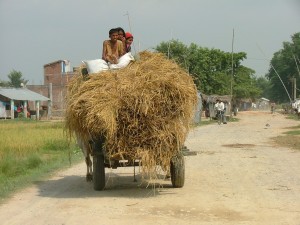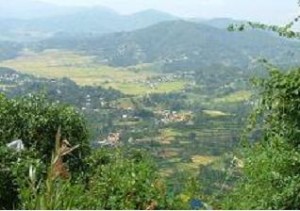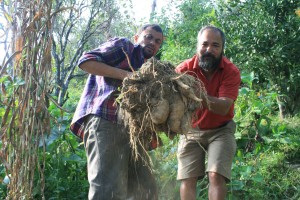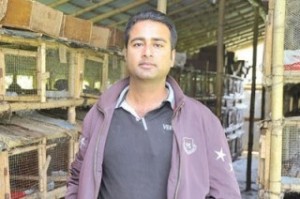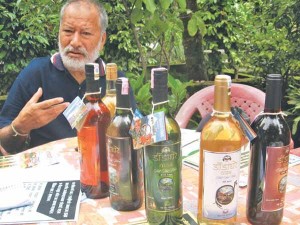How kiwi farming got started in Ilam: Icimod's story.
Kiwi orchards in Ilam writes another quite surprising chapter in the invention of new local income sources. Brought to the district by just one local who happened to visit a demonstration site at Godavari three years ago, Kiwi is now grown by 1300 plus farmers in 36 VDCs! In Dolakha, local farmers know too exactly how the popularity of this exotic green fruit could grow that quickly. There the story is the same. Once mature, a Kiwi tree can yield fruit for at least forty years; it requires little work and nurturing; and in Dolakha one kilo of fruit fetches 600 Nr. per kilo, on export markets up to 2,500 kilos! One VDC has made it mandatory for every household to keep a kiwi tree for the same reason, and with the ample proof of profitability, few hesitate!
Visiting one of Nepal's first ostrich farms (video from Rupandehi).
Ostriches is perhaps the most exotic new invention in the area of meat farming. It’s also a strong money-maker and once again, it took only one entrepreneurial soul to prove it. Ostrich Nepal opened up just six years ago, starting with merely 1,500 ostrich eggs flown in from Australia. Why such a novel idea in a country where most are used to chicken as far as poultry is concerned? Well, the owner and initiator, C. P. Sharma, sensed an exploding demand for meat – something that has followed with a growing middle-class not least in Kathmandu – and sure enough, now Nepal Ostrich runs three farms in Rupandehi, recently starting up a fourth in neighboring Dang. The sale is up too and to its further credit, the company employs 62 people!
One more thing about ostrich farming – like most other ideas proving profitable, it is spreading. One kilo of ostrich meat fetches 1,500 Nr. on the market, even 2,000 during peak demand at Dashain, and that kind of income opportunity does not go unnoticed. Nepal Ostrich is now selling eggs and chicks to a number of up-coming ostrich farms while demonstrating usability and recipes to consumers. This February ostrich farming was even the main attraction at a trade fair in Dhadeldura!
Meat is indeed just not chicken or even goats and buffalo, for that matter. If ostrich farming is the most exotic, here’s a close second in new initiatives: rabbit rearing! In Balambu west of Kathmandu, the owner of Nepal’s first commercial rabbit farm, Ujjwal Chapagain, has made rabbit meat take-off like a rocket on the city market. Middle-class, health-conscious consumers, and not least expats and tourists on the five-star hotels in Kathmandu, welcome rabbit meat for its many health benefits. Indeed, it tastes well, too. And what’s even greater from a rabbit farmer’s point of view is the fast rate of reproduction: one rabbit becomes 40 in just one year! Seeing the high potential, local farmers also from Dolakha and Sindhuli are starting up too.Trying new methods: rediscovering use of urine as fertilizer.
It’s not only a willingness to take up new types of fruits and meat but also novel cultivation methods that now characterises local entrepreneurship. One of the big jumps that some farmers take is a courageous shift to organic farming: it’s a leap into the unknown – and uncertain – as many farmers have forgotten most of the techniques pre-dating modern use of fertilizer and pesticides. But once again, the health-conscious middle-class – a growing market – and individual farmers with an entrepreneurial drive have stimulated initiative. Even an idea of using human urine as natural fertilizer is spreading. One farmer just recently shifted to urine from the household toilet and witnessed to his amazement how his cabbage grew to double size and his income too – in one year! It didn’t take long before most villagers in his area started to collect their urine as well!
Innovative wine-making with wild berries collected in the mountains – a steadily more lucrative business that’s now entering the export market too – and initiatives like experimenting with avocado growing, so far with promising initial results, even a shop based on old barter principles, exchanging vegetables and fruits for agro-input like seeds and fertilizer, are just a few of the many additional branches on the tree of local entrepreneurship in Nepal. Indeed, it’s not as spectacular and high-tech as the IT companies on the entrepreneurial stage in Kathmandu. But the willingness to take risks is clearly higher than in the more traditional rural communities of the past. The future will show how many more, new ideas will blossom in local Nepal.
